How we went to the hackathon in Helsinki and lost
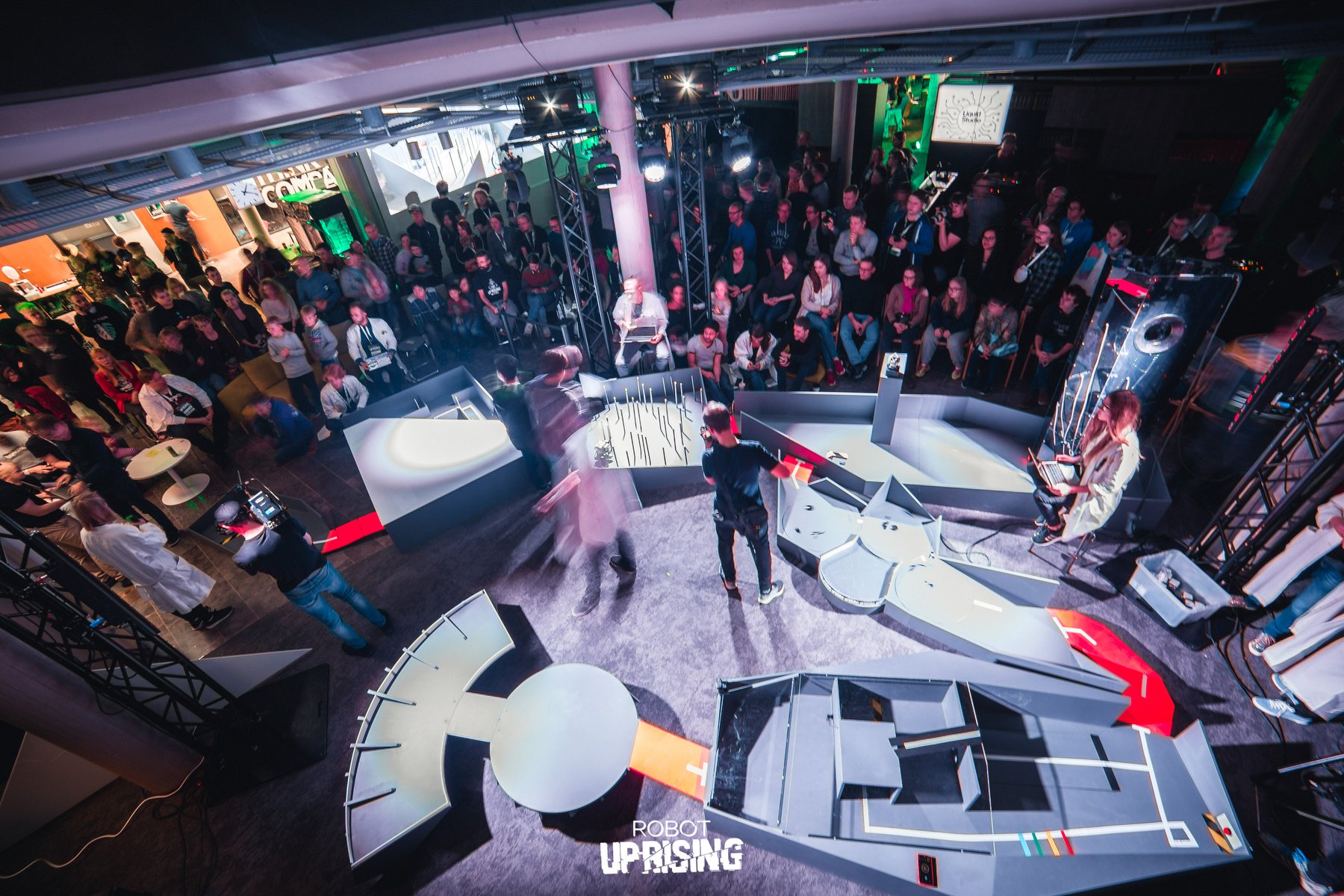
A little more than a month ago, when I saw on the Russian Hackers channel in a telegram the announcement of a hackathon, and even a robotic one, and also going on in another country, my friends and I decided - and why not? We participated in a large number of hakatons in Russia, but we never saw how it was there, abroad. Having quickly gathered and settled the visa issue, we went to Helsinki to collect robots from Lego Mindstorms.
In this article I will try to tell you in order what we had to do, whether to participate, and how much time and money we had to go. Let's start!
About tasks
Event called Robot Uprising , in order to take part in it. it was necessary to register no later than 2.5 weeks (by the way, it was written that teams will be selected, but apparently links to a github with a small number of projects are enough to go through). The main task was to assemble a robot from a Lego Mindstorms robot set issued to us, which would pass the track:
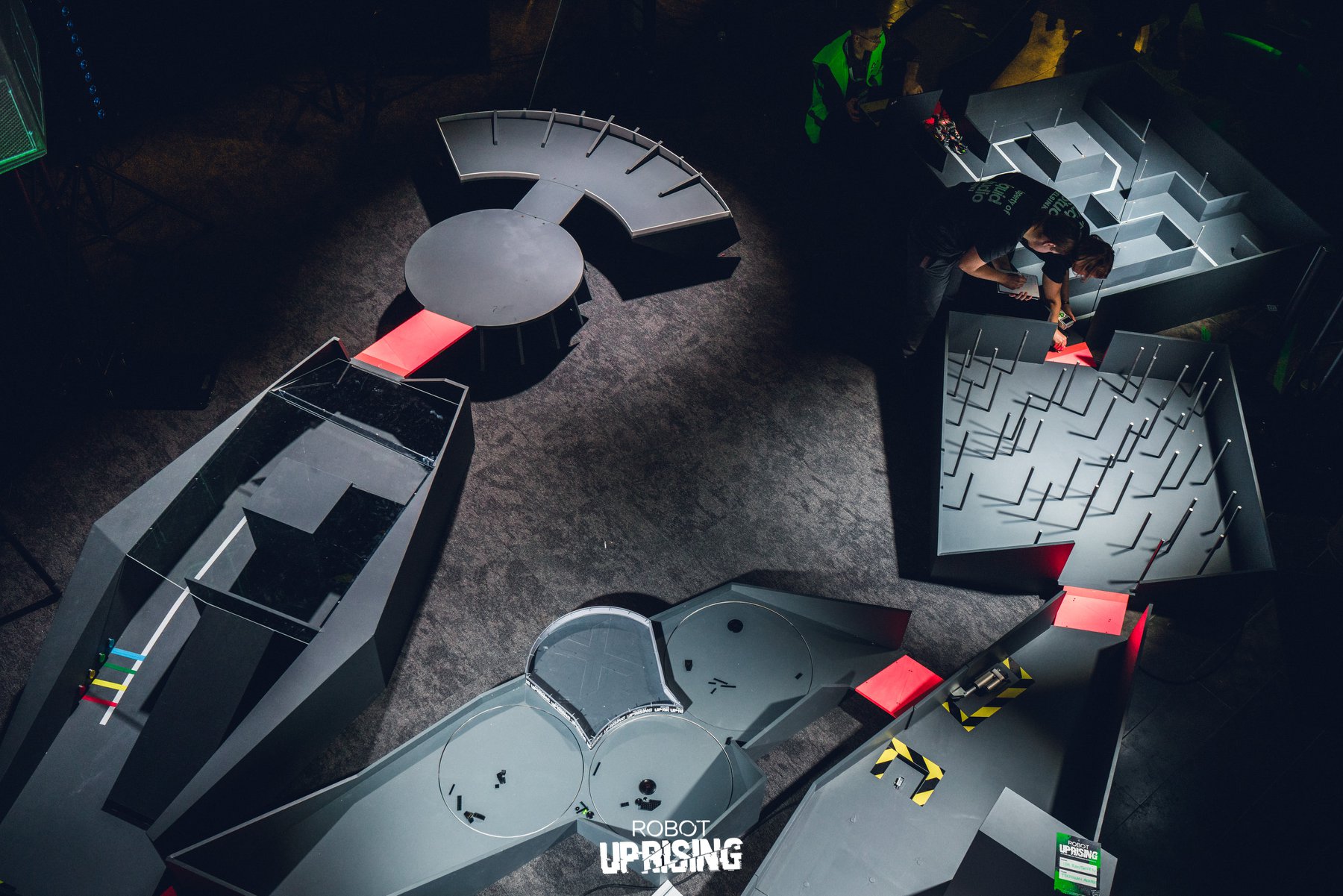
It consisted of several main stages:
- Labyrinth with a white line drawn on the floor. The maze was divided diagonally and at first it was moved apart so that it was impossible to pass. It was necessary to call the robot on the yellow pressure platform, wait a few seconds until the maze moved back, and go on.
- The second stage was a platform with metal pins (which the organizers poetically called iron trees). Between them it was necessary to pass without getting stuck and not touching them.
- At the third stage, it was necessary to drive to the end of the platform, press the red button, take the cube that fell as a result of pressing and, returning to the beginning with it, put it on the platform - then the door will open, into which it will be possible to pass.
- At the third stage there were three rotating disks arranged one behind the other and rotating in different directions. These discs also had small obstacles. On this part of the route, you just had to drive
- The penultimate stage, at which it was necessary to push the button to raise the ramp up, to call on it, and then go down to the final part of the path. This stage had different degrees of difficulty that could be chosen by pressing the multi-colored buttons - the higher the complexity, the more points are given for passing the stage (for example, one of the options was that the ramp rose and fell constantly).
- The final stage. After passing the track, the robot remains to take one of six places for the winners. But, since the past was much more than six, after all the seats were occupied, the next one to pass was to “call up” someone already on the pedestal and push him out of the ring.

As mentioned earlier, a scoring system operated at the competition. The points at the final were awarded for the style of the code, the clear passage of the track, the complexity of the penultimate stage, the degree of autonomy. For example, for its complete absence (control from a computer / console / joystick) they put 0 points, for hard-line passing of the route - 100, and a maximum of 500 points could be obtained using machine learning.
Points could also be earned before the final - for this you had to go through additional quests. To gain access to the tasks, it was necessary to find a couple of lines on the site, encrypted with a Caesar cipher, decrypt, follow the link, find a link to another page, and there was already placed quite a large number of quests of varying complexity. For example, there were such tasks: there are two pictures with noise, it was necessary to guess that they need to be imposed on each other and subtracted in order to get the word that needs to be provided as an answer. By the way, the points received before the final could also be spent, but more on that below.
And yet, from the interesting, the organizers have thought through the background and the setting. According to legend, the hackathon was held on the territory of a large automated factory, which produces robots. And, unexpectedly, something went wrong :) The room where the hackathon was held, the clothes of the organizers - everything was arranged in the style of this story, and it looked very cool. And the tasks that had to be performed were also included in this setting.
Pro equipment
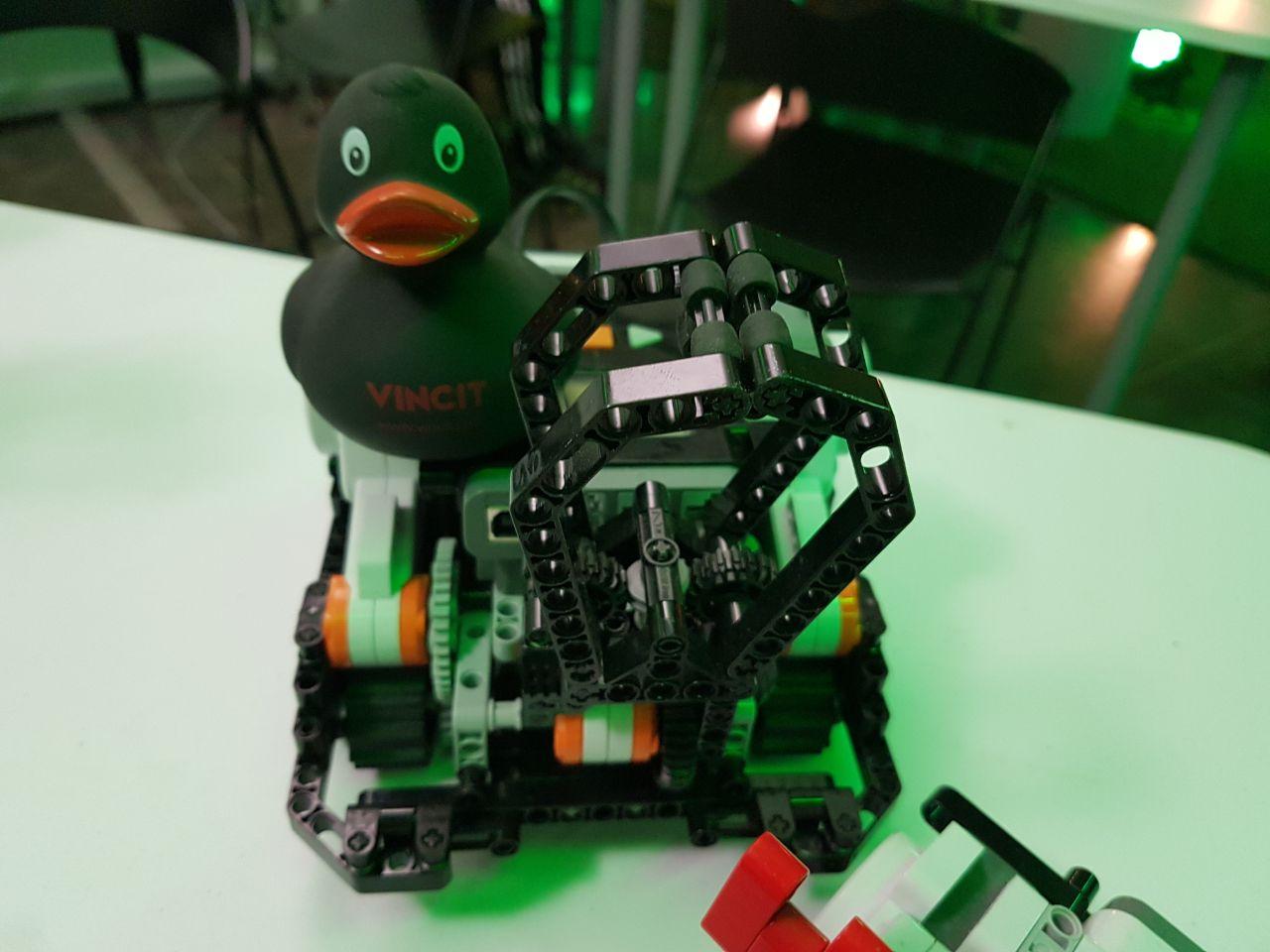
The organizers provided the team with a set of Lego Mindstorm consisting of an EV3 controller, a color sensor, a sonar, three engines, a gyroscope and wires, which were enough to connect it. Also included in the set are small things such as wheels, tracks, Lego blocks. The set turned out quite meager, is not it?
In order to properly solve the problem, such a set is not enough, so the participants had two options - either to bring additional iron with them (as it turned out later, you could use any hardware, not just lego - raspberry pi, arduino, different cameras This was done by most of the participants, bringing the necessary modules from home (well, we didn’t have anything at all with us.) But for those who did the same hindsight as we did, there was a kind of shop where you could exchange earned points for modules (right Yes, he earned 15 hours before the end of Hackaton that was a little late).
About our robot
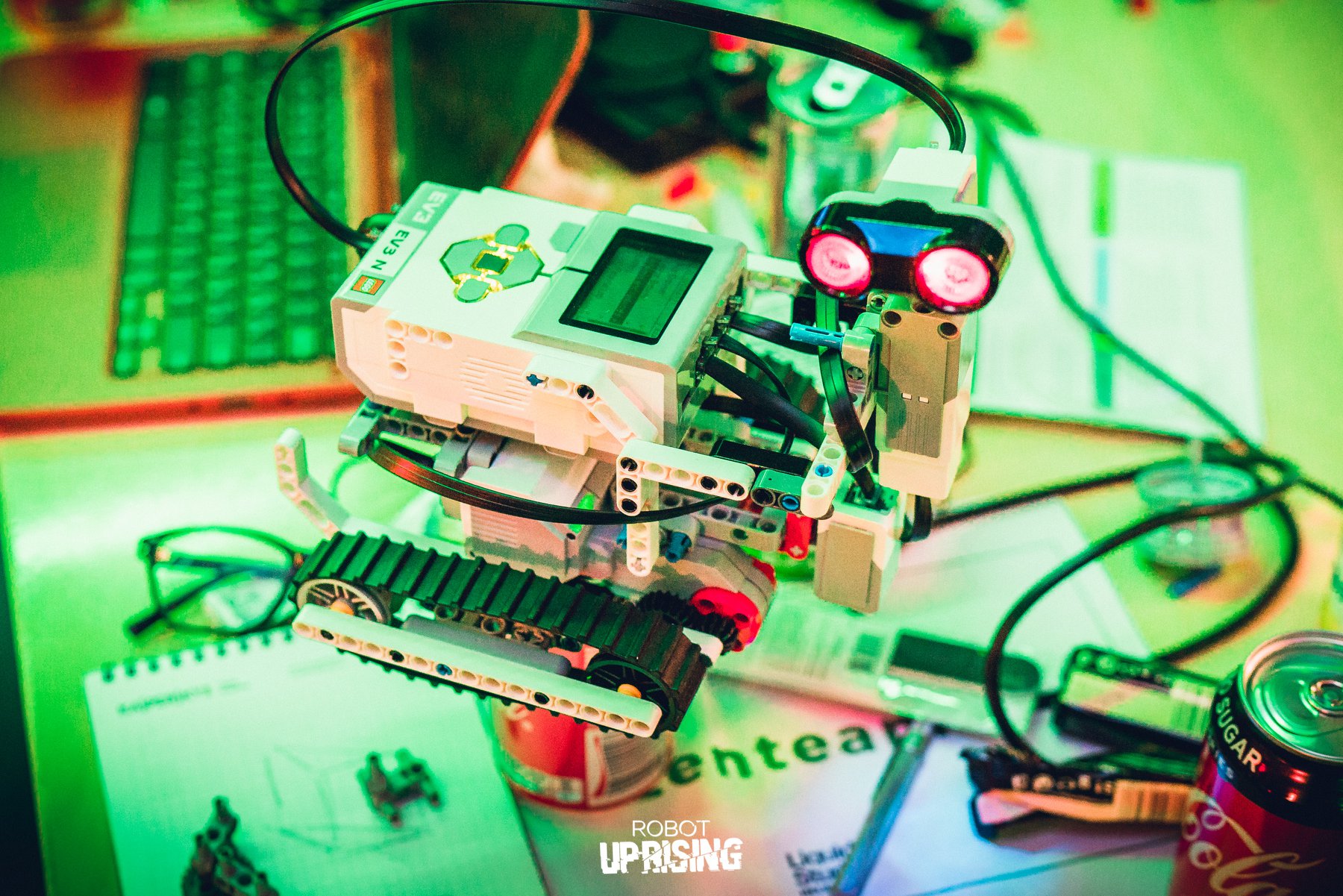
Probably, it is necessary to say that the EV3 controller, like the whole set, was not even held up to the hackathon by the team before the hackathon. Therefore, coupled with the lack of necessary parts and additional iron, we got the result quite expected.
Before the trip, looking at the info that the organizers sent us, and a little googling, we found that the EV3 microcontroller (ARM9) was in EV3, and that Debian could be installed there. Pleased that we could write on the pros and not connect the blocks, we were looking forward to the opportunity to work with the new hardware.
But in fact, everything was not as rosy as we expected. We realized that everything would not be exactly as we expected, as soon as we launched EV3 and tried to update it. Because he just hung up. The same thing happened when trying to install gcc. Having suffered with this for quite a long time and got to the mentors and participants of other teams, we found out several important things: the only way to work with the pluses is cross-compilation, almost all commands write on python (a couple of people tried to do something in JavaScript and C #) and what else besides us were a few Russian-speaking participants.
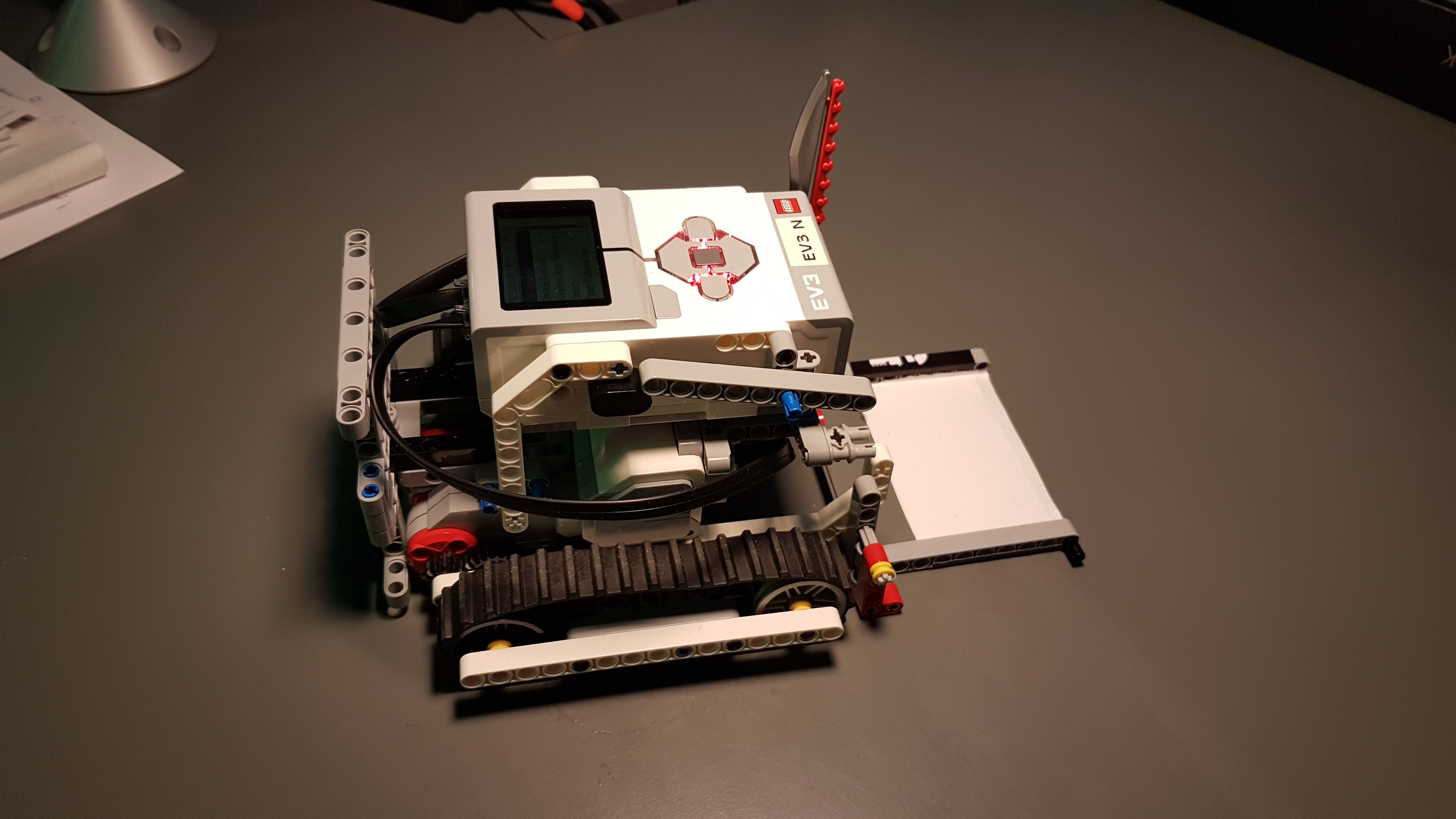
Having made a difficult decision to write on a python, we finally got to work. In fact, even after this, we are faced with a huge number of minor problems, but I will not overload this article with them.
As a result, by the end of the hackathon, we managed to make and debug normally only remote control. But despite this, we took 11th place out of 29, which, I think, is very good for the first time.
How the trip was organized

Now I’ll tell you a little about what needs to be done and how much money we needed for the trip. First of all, we wrote to the organizers and asked about everything that was a little incomprehensible to us. After passing the selection, at our request, the organizers sent us invitations for visas, although they sent them when we submitted documents for almost a week. But, in principle, visas to Finland are among the simplest, so we were not particularly afraid that they would not give them to us. By the way, we were lucky, and through the visa center we issued them in 5-6 days. Accommodation in Helsinki is expensive, so we, as poor students, decided not to rent a house for the hackathon time, but to write code or sleep there all the time (by the way there were problems, there were only two hammocks and a small swing for a hundred people, which was not enough ). By the way, there were three meals a day at the hackathon :)
We traveled by plane from Moscow, but we were lucky, and Victory had an action, so along with the purchase of baggage seats and payment for the choice of seats, the tickets were cheap enough.
And a couple of words about the language barrier. In our three-person team, only one person spoke good English, and two of them could have something on the beginner level. And that was quite enough. In principle, if your level of English is at level 11 of school, you don’t need to be afraid - in extreme cases, you can buy a local SIM card for 6 euros for five days and use Google translator. Well, in extreme cases, at the very hackathon, we found several Russian-speaking Finns, including among the organizers.
Estimated estimate for a three-day trip:
- Visa processing through the visa center ~ 5000 rubles (depends on the euro).
- Tickets for the plane 3000 rubles round-trip, for luggage and the choice of the place about 1000 rubles.
- Sim card, transport costs in Helsinki ~ 2000 rubles.
- One night at the hotel, since the plane was in the morning ~ 1500 rubles.
Total: 12,500 per person.
Results

In conclusion, I would like to say that this was probably the best hackathon in the organization in which I participated (and there were quite a lot of them). Participation in it brought me and my teammates a great experience of being in the IT environment of another country, and, despite the large number of technical problems, we received a lot of positive impressions. By the way, Robot Uprising is held annually, so I hope to meet someone from the readers of this article next time.
The publication uses photographs from the hackathon group .
